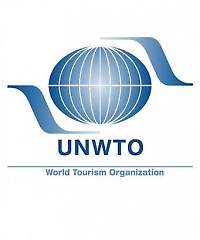 International tourist arrivals reached a total of 1,184 million in 2015, up 4.4%, according to the latest UNWTO World Tourism Barometer. This translates into approximately 50 million more tourists (overnight visitors) traveling to international destinations around the world last year compared to 2014.
International tourist arrivals reached a total of 1,184 million in 2015, up 4.4%, according to the latest UNWTO World Tourism Barometer. This translates into approximately 50 million more tourists (overnight visitors) traveling to international destinations around the world last year compared to 2014.
This marks the 6th consecutive year of above-average growth, says UNWTO, with international arrivals increasing by 4% or more every year since the post-crisis year of 2010.
Demand was strong overall, but with mixed results across individual destinations. Tourism was affected by unusually strong exchange rate fluctuations, the drop in oil prices and other commodities which increased disposable income in importing countries but weakened demand in exporters, as well as increased safety and security concerns.
Growth in advanced economy destinations (+5%) exceeded that of emerging economies (+4%), boosted by the solid results of Europe (+5%).
By region, Europe, the Americas and Asia and the Pacific all recorded around 5% growth in 2015. Arrivals to the Middle East increased by 3% while in Africa, limited data available points to an estimated 3% decrease, mostly due to weak results in North Africa, which accounts for over one third of arrivals in the region.
Positive, but lower, prospects for 2016
Results from the UNWTO Confidence Index remain largely positive for 2016, though at a slightly lower level as compared to the previous two years. Based on the current trend and this outlook, UNWTO projects international tourist arrivals to grow by 4% worldwide in 2016.
By region, growth is expected to be stronger in Asia and the Pacific (+4% to +5%) and the Americas (+4% to +5%), followed by Europe (+3.5% to +4.5%). The projections for Africa (+2% to 5%) and the Middle East (+2% to +5%) are positive, though with a larger degree of uncertainty and volatility.
2015 Regional Results
Europe (+5%) led growth in absolute and relative terms sup-ported by a weaker euro vis-à-vis the US dollar and other main currencies. Arrivals reached 609 million, or 29 million more than in 2014. Central and Eastern Europe (+6%) rebounded from last year’s decrease in arrivals. Northern Europe (+6%), Southern Mediterranean Europe (+5%) and Western Europe (+4%) also recorded sound results, especially considering the many mature destinations they comprise.
Asia and the Pacific (+5%) recorded 13 million more inter-national tourist arrivals last year to reach 277 million, with uneven results across destinations. Oceania (+7%) and South-East Asia (+5%) led growth, while South Asia and North-East Asia grew 4%.
International tourist arrivals in the Americas (+5%) grew 9 mil-lion to reach 191 million, consolidating the strong results of 2014. The appreciation of the US dollar stimulated outbound travel from the United States, benefiting the Caribbean and Central America, both recording 7% growth.
Results in South America and North America (both at +4%) were close to the average.
International tourist arrivals in the Middle East grew by an estimated 3% to a total of 54 mil-lion, consolidating the recovery initiated in 2014.









